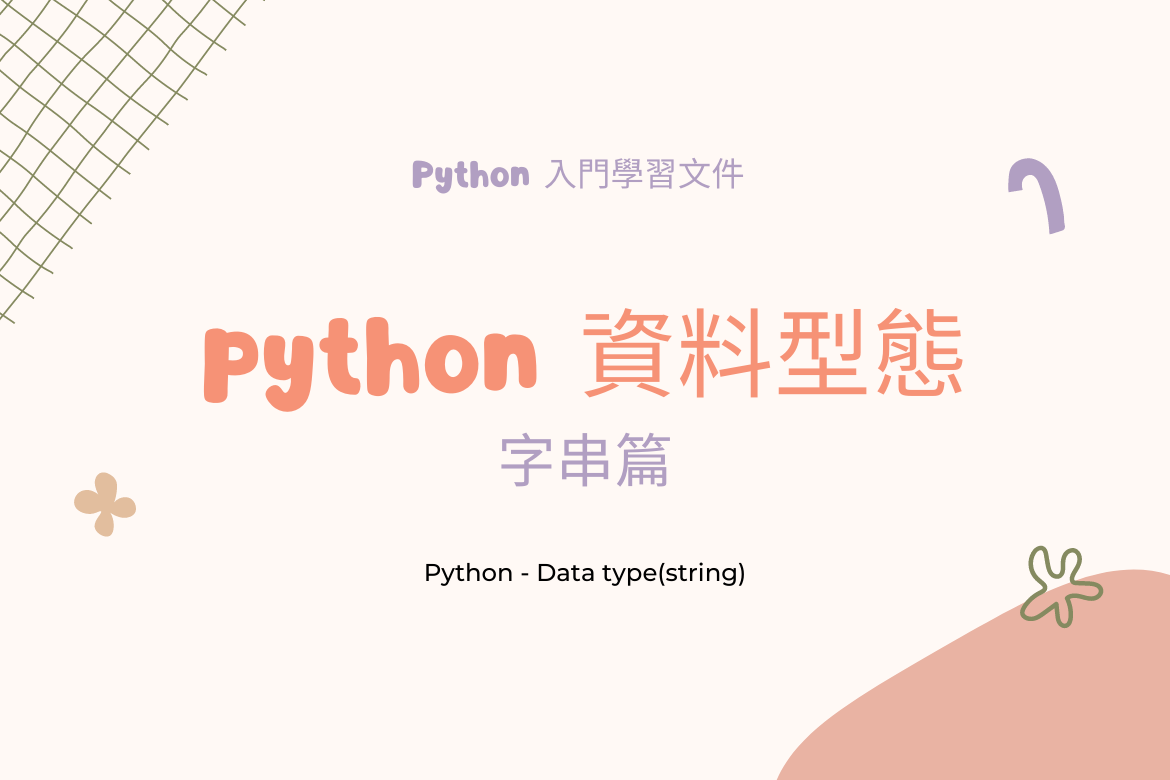487
字串代表著以文字與符號為主的資料型態,在Python可以當作一種集合或者矩陣來看待,字串裡的每個文字對映著一個位置編號,最左邊的起始位置為0,開始往後數,空格與符號都算在內。
A = "hello, how are you?"
#使用len()函數,取得字串長度
print (len(A))
#取得第0個位置的值
print (A[0])
#取得最後一個位置的值
print (A[-1])
#取得第9個位置的值
print (A[9])#輸出結果
>>> 19
h
?
w切割或合併字串
除了能取值,字串也能像積木般做不一樣的組合。
切割字串
A = "Good luck"
#取A的字串,第0個位置到第4個位置(第5個位置不包含)
print (A[:5])
#取A的字串,第2個位置到最後一個位置
print (A[2:])
#取A的字串,從倒數第二個位置到倒數第5個位置
print (A[-6:-2])#輸出結果
>>> Good
>>> od luck
>>> d lu組裝字串
A = "Good luck"
B = "Good morning"
C = A+B
D = A[2:7]+B[-8:-2]
print (C)
print (D)
#輸出結果
>>> Good luckGood morning
>>> od lu morniformat組裝字串
除了上面範例組裝字串的方式,還有一個正規的函數方式來組裝字串。
#單一字串填入
age = 18
information = "My name is Robert, and I am {}"
print(information.format(age))
#輸出結果
>>> My name is Robert, and I am 18這個函式也接受多個參數匯入的方式,見以下範例
height = 180
weight = 70
sport = "badmintion"
introduction = "My height is {} and my weight is {} kg. My favorite sport is {}."
print(introduction.format(height, weight , sport))
#輸出結果
>>> My height is 180 and my weight is 70 kg. My favorite sport is badmintion.其他常見用法
英文大小寫
A="Jerry"
#全體大寫
print(A.upper())
#全體小寫
print(A.lower())
>>> JERRY
jerryPython 入門學習系列文章
- PYTHON 基本語法
- PYTHON 資料型態(概念介紹篇)
- PYTHON 資料型態(數字篇)
- PYTHON 資料型態(字串篇)
- PYTHON 資料型態(LIST)
- PYTHON 資料型態(DICT)
- PYTHON 資料型態(BOOLEANS)
- PYTHON 條件判斷算式(IF,ELIF,ELSE)
- PYTHON WHILE 迴圈
- PYTHON FOR 迴圈
- PYTHON DEF 函式
- PYTHON MODULES 模組

